The Modern Seaweed House by Vandkunsten and Realdania Byg
Seaweed pillows were used as cladding for this holiday house on the Danish island of Læsø by architecture studio Vandkunsten and non-profit organisation Realdania Byg (+ slideshow).
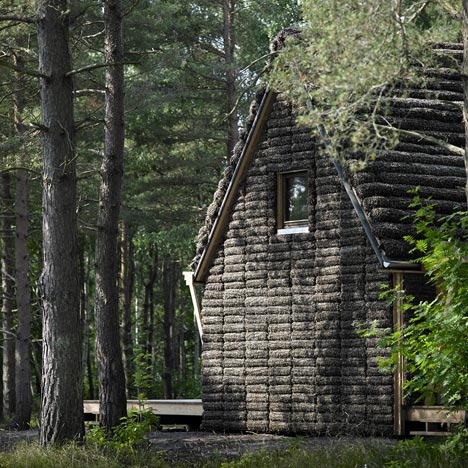
The Modern Seaweed House revisits the traditional construction method in Læsø, where for many centuries trees were scarce but seaweed has always been abundant on the beaches. At one stage there were hundreds of seaweed-clad houses on the island but now only around 20 remain, which prompted Realdania Byg to initiate a preservation project.
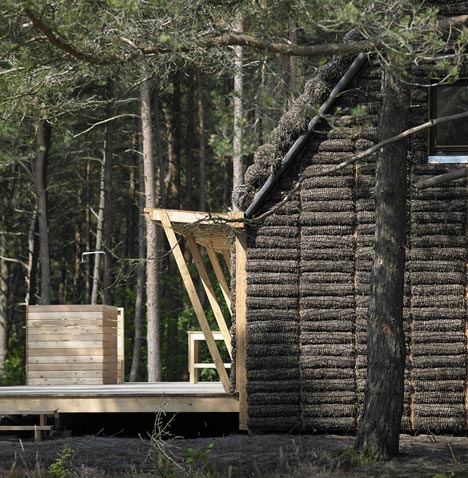
The team enlisted Vandkunsten to design a new house that combines the traditional material with twenty-first century construction techniques.
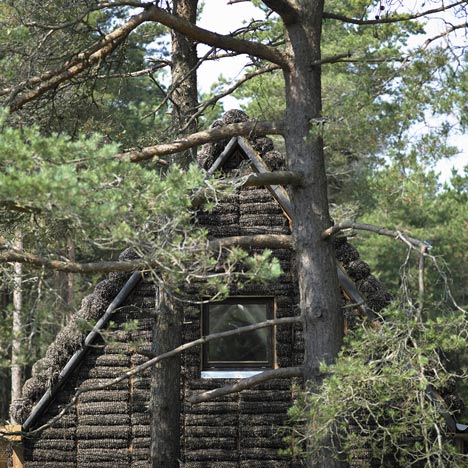
"Seaweed is at the same time very old and very 'just-in-time', because it is in many ways the ultimate sustainable material," Realdania Byg's Jørgen Søndermark told Dezeen.
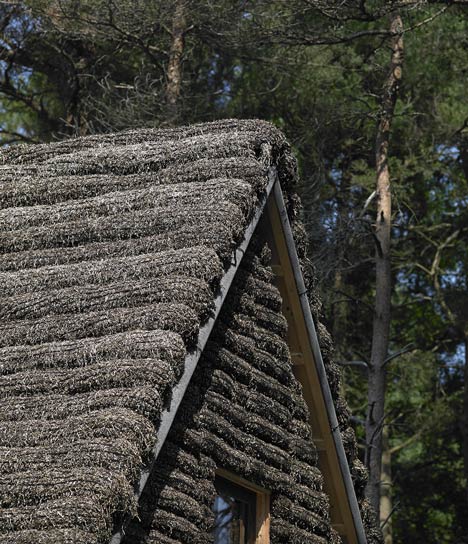
"It reproduces itself every year in the sea, it comes ashore without any effort from humans, and it is dried on nearby fields by sun and wind," he continued. "It insulates just as well as mineral insulation, it is non-toxic and fireproof, and it has an expected life of more than 150 years!"
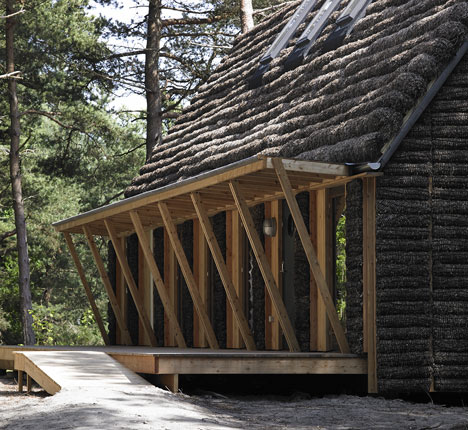
Rather than just piling the seaweed onto the roof, the designers stuffed the material into netted bags and attached it in lengths across the timber-framed walls and roof of the house. More seaweed was enclosed in wooden cases to use as insulation behind the facade and beneath the floors.
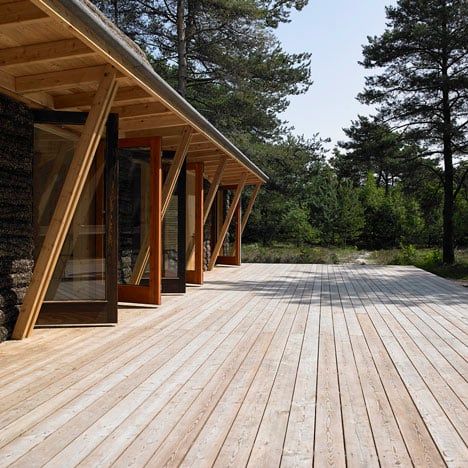
"By using seaweed in the construction, we not only secure the continued supply of seaweed for use on the historic houses, we also reintroduce a material to the modern building industry which is CO2-reducing, environmentally friendly and sustainable in a broader sense," said Søndermark.
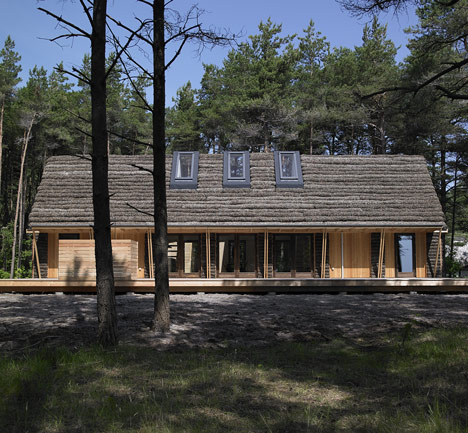
The interior walls are lined with wooden boards, framing a series of rooms intended to house two families. A double-height living room and kitchen forms the centre, while bedrooms are located at the ends and in the loft.
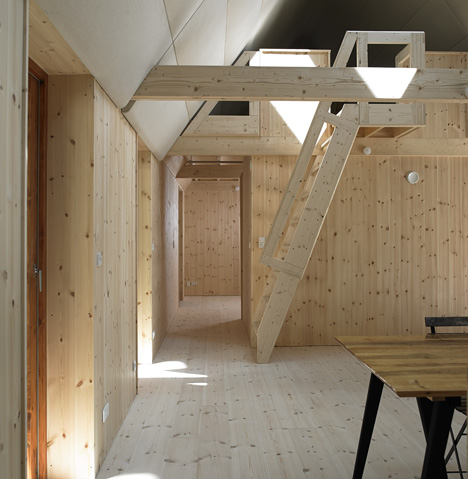
"Our project has demonstrated that seaweed has remarkable acoustic properties," added Søndermark. "This creates surprisingly comfortable rooms, while the ability to absorb and give off moisture contributes to regulate the indoor climate."
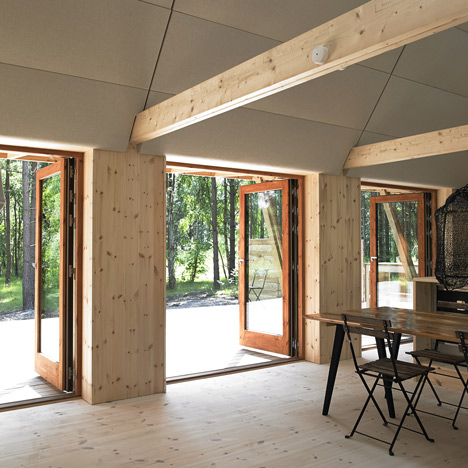
As well as building the new seaweed house, Realdania Byg has restored the seaweed roof of Kaline's House, a 150-year-old residence next to the site. The team hopes the two projects will inspire more seaweed architecture and restoration in Læsø.
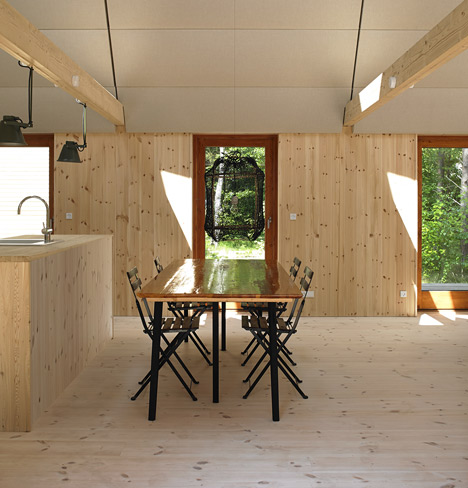
"The seaweed houses on Læsø are physical testimony to the culture and the life that have characterised the building tradition on the island for centuries," said Realdania Byg director Peter Cederfeld. "It is our hope that others will embrace the experiences from this project and develop the ideas even further."
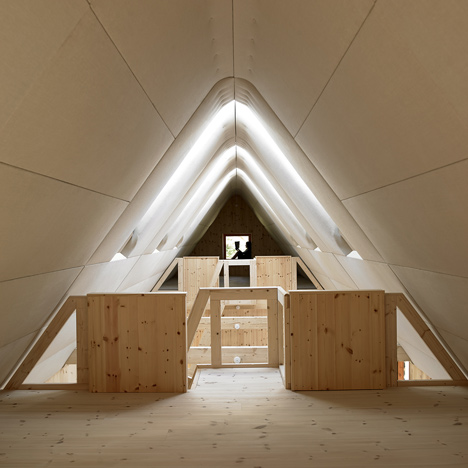
Seaweed has also been used in a few lighting designs recently, including for a series of laser-cut lampshades. See more stories about seaweed »
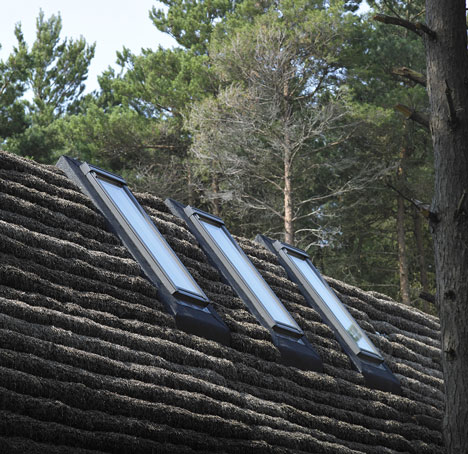
Photography is by Helene Høyer Mikkelsen and Realdania Byg.
Here's a press release from Realdania Byg:
The cultural heritage of Læsø: A resource in sustainable building
On the small island of Læsø in Denmark, a several hundred-year-old building style has formed the basis on which a new holiday house has been built – the Modern Seaweed House. The house is designed by Vandkunsten firm of architects and developed by Realdania Byg as a holiday house built in wood, covered and insulated with seaweed. The Modern Seaweed House is carefully adapted into the landscape and has a wonderful interaction with nature, the historic buildings and Læsø's unique cultural history. The Modern Seaweed House is now to be sold – but the ideas live on.
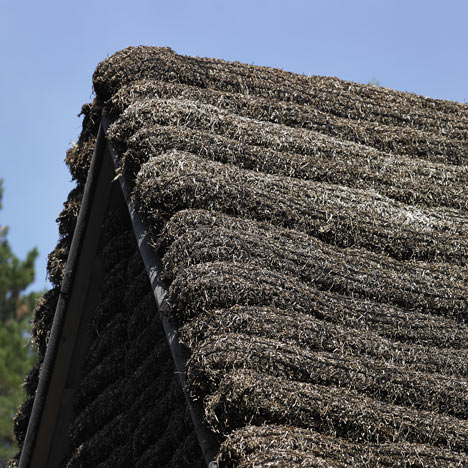
The Modern Seaweed House is part of the Realdania Byg project 'Seaweed Houses on Læsø' that also includes 'Kaline's House' – a listed seaweed house from 1865, purchased and carefully restored by Realdania Byg in 2012. The seaweed houses on Læsø are an exceptional part of the cultural heritage of Denmark – and the world. Originally, several hundred of these seaweed houses were found all over Læsø while only approximately twenty remain today. The traditional seaweed houses were built using a timber frame construction with robust seaweed roofing – an abundant resource in the small and modest fishing community. 'Kaline's House' is one of these houses.
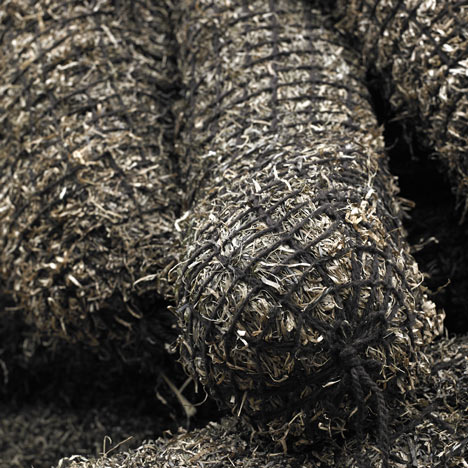
The Modern Seaweed House is not a replica of the building style of the past but a development inspired by the architectural history of Læsø. In contrast to the historic houses, on which the seaweed is stacked high on the roof, the Modern Seaweed House is more contemporary and tight in its expression. The visible seaweed has been stuffed into bolsters made of knitted nets attached to the façade in lengths. At the same time, seaweed is used invisibly for insulating floors, walls and ceilings enclosed in wooden cassettes. These prefabricated building modules comprise the framework of the house.
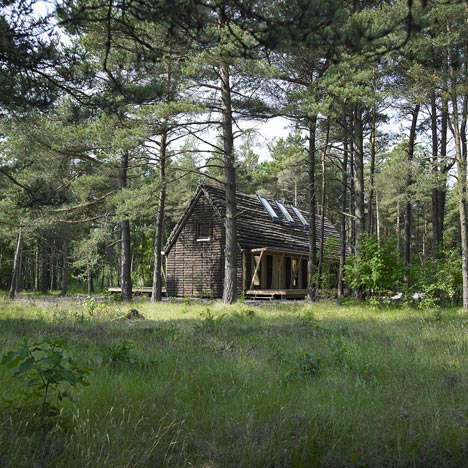
A sustainable resource
When seaweed was used in the past as a building material it was due to the fact that seaweed was found just outside the door, it was free, had a long-term durability, was very effective as insulation, naturally protected against vermin and putrefaction, and, finally, there was lots of it. These very preconditions make seaweed of current interest as a building material, especially in the light of the present attention to the topic of sustainability. The Modern Seaweed House fulfils expected 2020 demands, and, thereby, will have extremely low energy consumption.
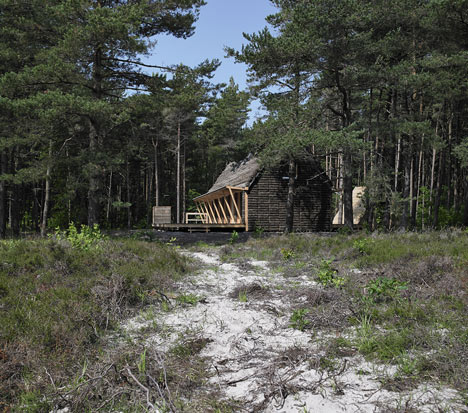
At the same time, LCA (life cycle analysis) calculations have shown that the house actually has a negative carbon footprint. The almost exclusive use of organic materials, including seaweed used as both insulation and roofing material, causes the amount of CO2 accumulated within the house to exceed that which has been emitted during the production and transportation of the building materials.
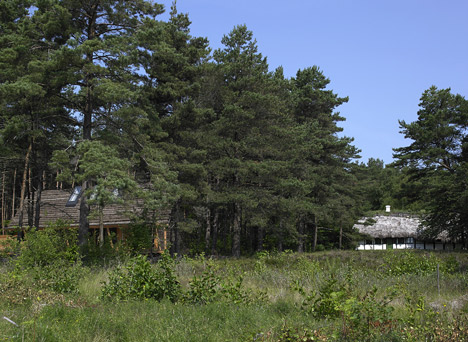
In a broader view
With the 'Seaweed Houses on Læsø' project, Realdania Byg wishes to focus on the unique tradition of Læsø using seaweed as a building material – both the immediate need to ensure the architecture of the past and the at least equally relevant need to develop the architecture in a sustainable approach. This way, seaweed is also ensured for restoring the historic houses.
Realdania Byg's project to develop and preserve seaweed houses on Læsø is one among a variety of existing projects that aim to secure the survival of the distinctive seaweed roofs on Læsø. The initiative is carried out in unison with enthusiastic inhabitants of Læsø, other foundations as well as the Danish Agency for Culture who are all involved in the effort to save this rather exceptional part of the cultural heritage of Denmark – and the world.
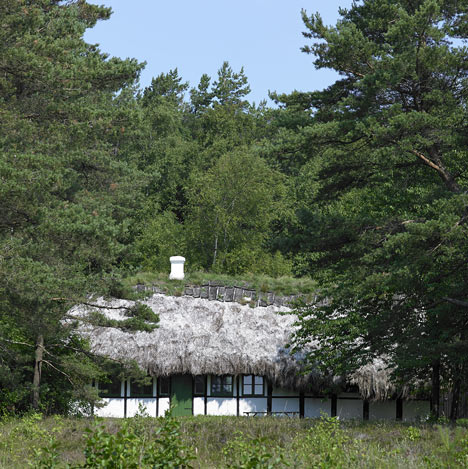
The Modern Seaweed House has shown that eelgrass has a lot of qualities. Besides its excellent insulating property and long-term durability, which in itself offer a lot of potential, it has been discovered through practical application that seaweed has exceptional acoustic properties. This creates surprisingly comfortable rooms while the ability to absorb and give off moisture contributes to regulate a good indoor climate. The numerous qualities provide a wide range of applications in modern, sustainable building.